This story originally appeared in i-D’s The New Wave Issue, no. 373, Fall/Winter 2023. Order your copy here.
When you win RuPaul’s Drag Race, you’re inevitably catapulted to the drag world’s peak. But for Sasha Colby, the winner of the most recent season of primetime television’s campest competition, that wasn’t necessarily a motivating principle — after all, why aspire to reach the top when you’re already there? A stalwart of the American scene, a flagship name from coast to coast, her two-decade career is easily one of the most decorated in contemporary drag. These days, the accolade of ‘legend’ may be flung about with abandon but, since first stepping on stage in her native Hawaii at the age of seventeen, she has proven herself more than worthy of the term. In 2012, she was crowned Miss Continental at the storied queens’ pageant that, since its inception in 1980, has effectively served as the Miss Universe of the drag world. In the years between then and her appearance on Drag Race, she has brought her particular brand of timeless, high-femme glamour to a global audience, establishing herself as a model of inspiration for the generations that have followed in her wake.
Despite the success she’d already accrued, late last year she felt compelled to step up to the notoriously tough challenge posed by RuPaul’s Drag Race. What drove her was not a navel-gazing desire to prove her mettle; rather, it was a deeply-felt need to make of herself a concrete antidote to the senseless, vicious anti-trans narratives poisoning the political mainstream to serve as irreducible proof that the truth about transness is anything but the fictitious yarns so many media outlets are committed to spinning.

Indeed, Sasha is unapologetically trans, and has been since formally embarking on her transition journey at the age of eighteen. While this is far from the reason she received her crown back in April, it is nonetheless a factor that makes her win all the more significant. In an era of bathroom panics, legislative regression regarding trans rights and ever more harrowing anti-trans violence statistics, Sasha’s victory serves as a defiant middle finger, sure, but perhaps more importantly, a source of inspiration, celebration and unrepentant trans joy.
When Sasha hops onto Zoom, she does so immaculately preened from a hotel room in Paris. She’s on the second stop of her fashion month tour, which started in New York. While there, one of the shows she couldn’t miss was Luar, the label run by her dear old friend Raul Lopez. Bonded by a magpie’s eye for all things extra, and by a love that runs deep between them, we couldn’t conceive of anyone better matched to interview the woman who Raul describes as “your drag queen’s favourite drag queen”. Here, the pair kiki on the proud legacy of trans drag, fond memories of rhinestoned-hammer-toting queens, dragging up in the fourth grade and why Sasha’s community isn’t one to be fucked with.
“The only thing I know to do when I’m backed into a corner is to stand up for myself and fight back. Because I’m not going nowhere.” Sasha Colby
Sasha Colby: Aloha!
Raul Lopez: Aloha, girl!
Sasha: How are you, babe?
Raul: I’m feeling like a working girl, they got me like a drag queen performing every night — stunts and shows! What’s going on with you, though?
Sasha: I’m actually having a day off. I’m in Paris right now. We just did the shoot with Willy and Olivier yesterday, which was so much fun.
Raul: How long are you in Paris for?
Sasha: I leave on Wednesday, so a few days.
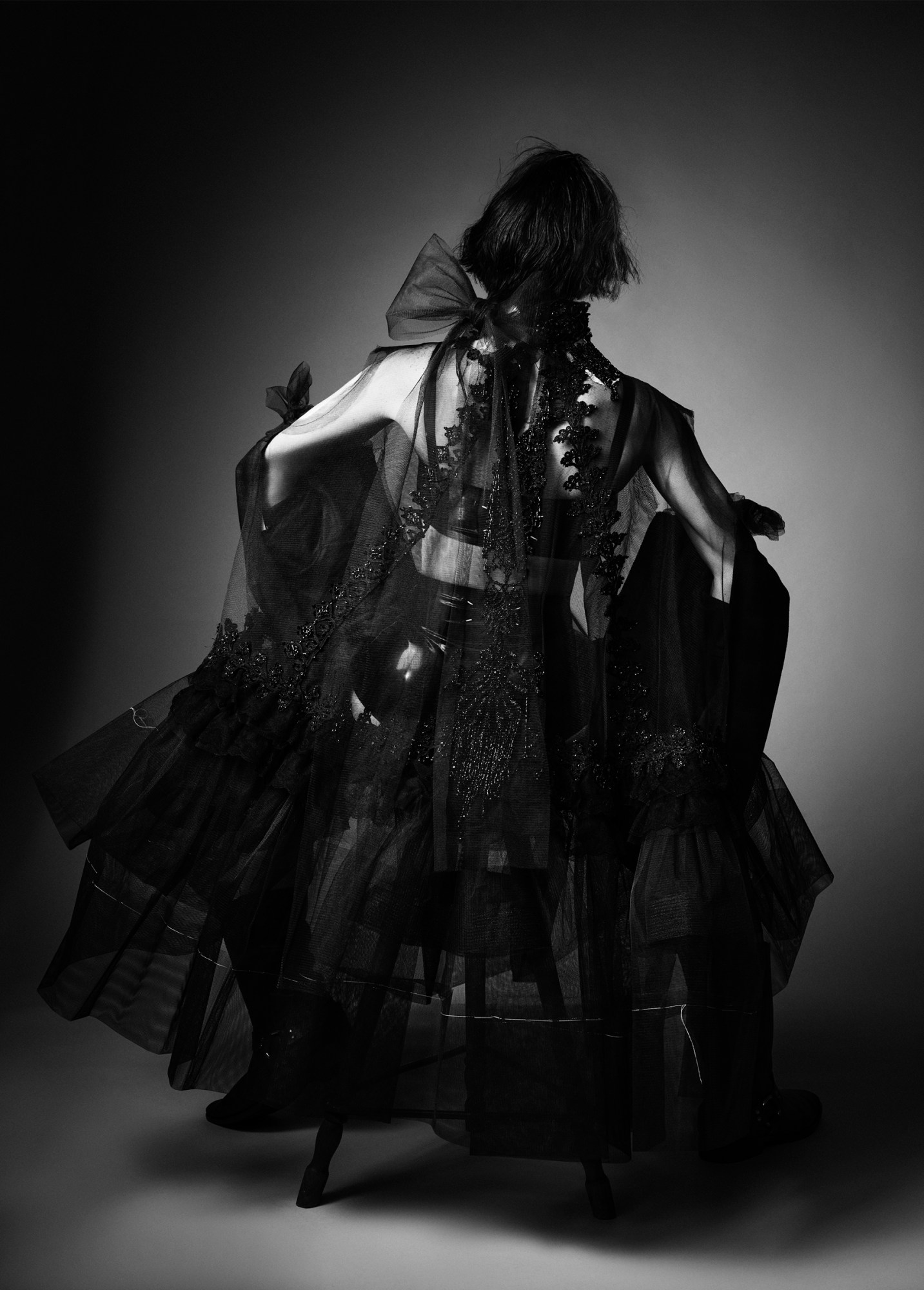
Raul: Right when I get there, bitch?!
Sasha: I know, right? It’s right when everybody gets here!
Raul: Literally. But let’s talk! Let’s start with how we met?
Sasha: Ooh, let’s see… the first time I remember meeting you, me and Vivien Yi were picking you up from your apartment in an Uber and we were going somewhere. Was it Halloween? Was it somebody’s house party?
Raul: That sounds about right. Vivien loves a soirée!
Sasha: She does! But you were dressed to the nines. You looked incredible.
Raul: Well, I remember Viv calling me being like, ”Sasha’s coming into town!” And I was like, “Oh no bitch, you need to call me!” I feel like we have that connection, too. We’re very motherly in a way. If you know something, you like to share it with the girls.
Sasha: I think that’s how we both grew up, too.
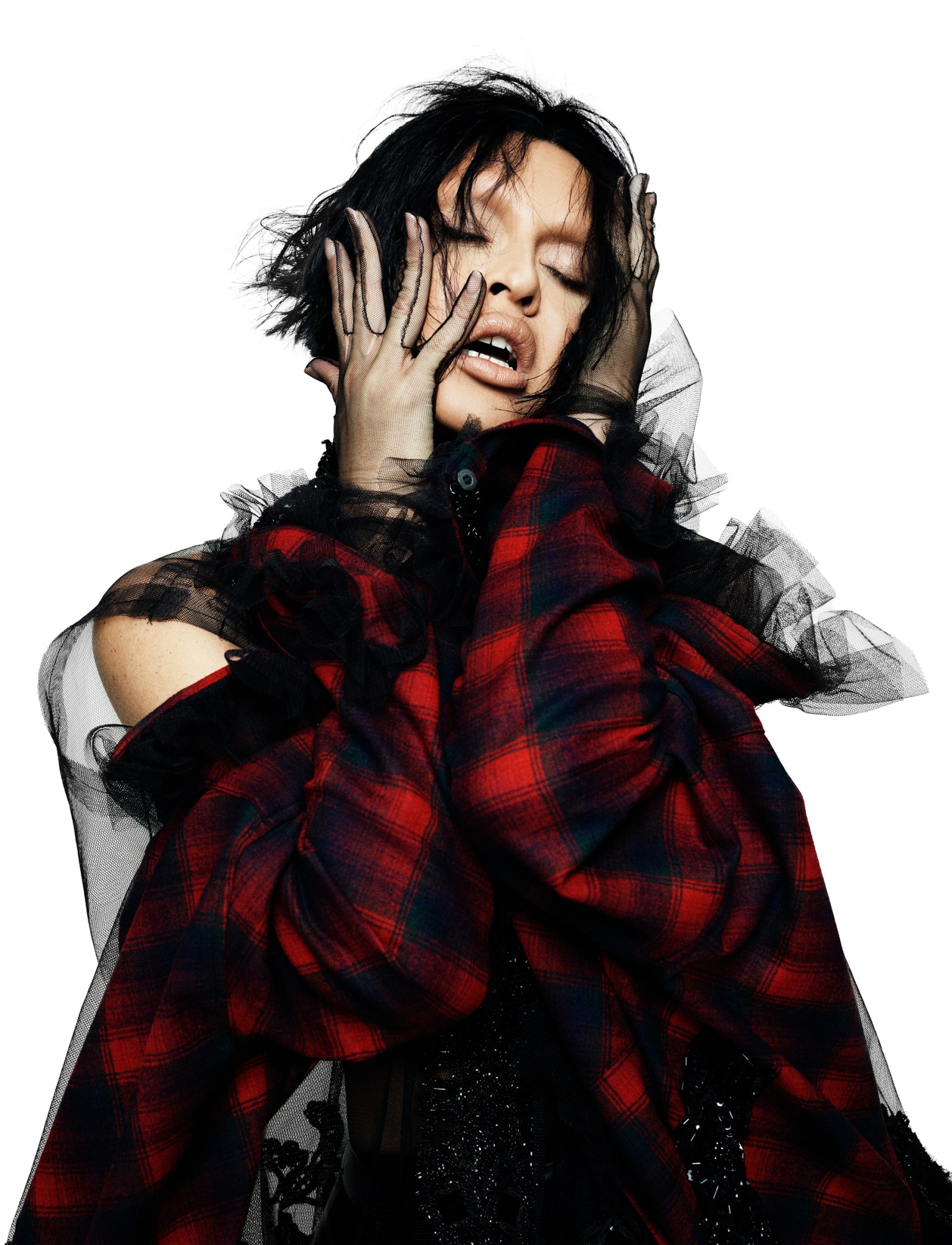
Raul: And that’s so crucial, especially in this industry — and especially for people who look like us. You’ve accomplished so much, and you have such a crazy trajectory behind you. I mean, when I first met you, I was gagging. But you already felt like family, because we have the same friends. Even though you were on the West Coast, you were always coming to New York, so I was so hyped up to meet you. You’re just that bitch. You have that aura, which is also clear from your style. What role does fashion play for you?
Sasha: I mean, fashion has always been there for me. The first introduction to transness is usually changing your clothes. When you’re as feminine as I was as a child, becoming a rocker or a punk doesn’t come out of nowhere. It was a place where I could wear eyeliner, a platform heel or a pair of fishnets. It was a way for me to express myself. But fashion always had that hold on me — I love experimenting with characters, and portraying different emotions and female archetypes.
Raul: What are your earliest memories of experimenting with fashion?
Sasha: There are so many! One is of my sister-in-law, she was a real girl’s girl. She had the little mules with the maribou trim, the little satin robes and a beautiful vanity set with all those perfumes that had the pouffey thing — it was just so ultra femme and ultra glam. This was back in the 80s and 90s, so I basically thought she was Madonna. [Laughs] But it just gave me this sense of high femme, high glam, which I’ve always gravitated towards. The funny part is that, before transitioning, in my teen years, I was working at GAP and Banana Republic, which was when Cruel Intentions was coming out. I thought I was Ryan Phillippe. You literally couldn’t get me out of a black turtleneck and a charcoal slack.

Raul: Girl, I love Banana Republic. I need to send you this photo I found literally today of me in this chunky neck sweater…
Sasha: I know the one!
Raul: Period. So when did that interest in fashion lead you to drag?
Sasha: I remember it started in elementary school, probably third or fourth grade, I would go running and lock myself in the bathroom. My sister would have her makeup in there, because we shared a bathroom, which was perfect. I would put the radio on, light a candle and do a smokey eye — I’d find my song, and just lip sync, sometimes for like two, two and a half hours until my dad would be pounding on the door because he had to take a shower. I don’t know what they thought I was doing in there, but I would get brave, honey. My mom had this black and white, flamenco-style lace shawl, and I would take that and pose — it was giving Mugler back when they did all that fringe.
Raul: I’m screaming!
Sasha: But then I got real brave, and I took one of my sister’s bras and a negligée. So I was in full drag every day from fourth grade.
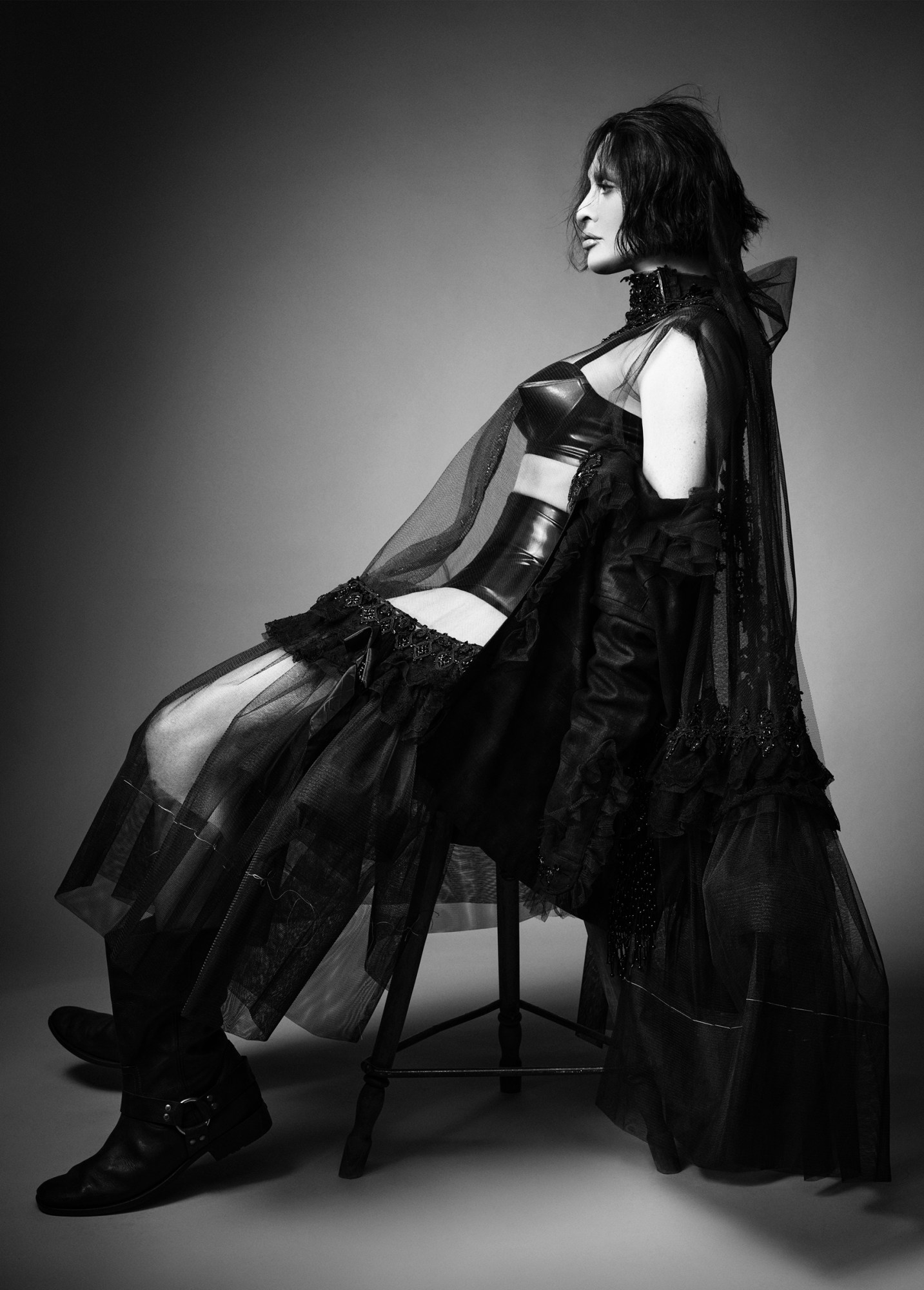
Raul: Woah, that’s early, girl.
Sasha: Yeah, and they were already teasing me, calling me a girl.
Raul: And you were like, “Thanks! xo”
Sasha: Yes, girl! That’s affirming, thanks! [Laughs] But seriously, at school, they would pull my eyelashes out because they were too long. They just wouldn’t let me have it.
Raul: It’s kind of crazy when parents, or people in general, kick up a fuss — because it’s like, girl, you’re born like this.
Sasha: Exactly, and what’s crazy is that before I transitioned, people were like, “You’re a girl! You’re a girl! You’re a girl!” And then as soon as I did, they’re like, “You a man!” [Bursts into laughter] Come on! But that was my first drag experience. Then I started to dance —I trained in ballet, jazz, hip-hop and danced throughout high school. That’s where I met my first gay friends who took me to my first drag show.
Raul: What was the Hawaiian drag scene like at that time?
Sasha: Well, I was seventeen, and I would sneak into this eighteen-and-over club, Venus Nightclub. It was Fridays and Saturdays, but Fridays were the night.
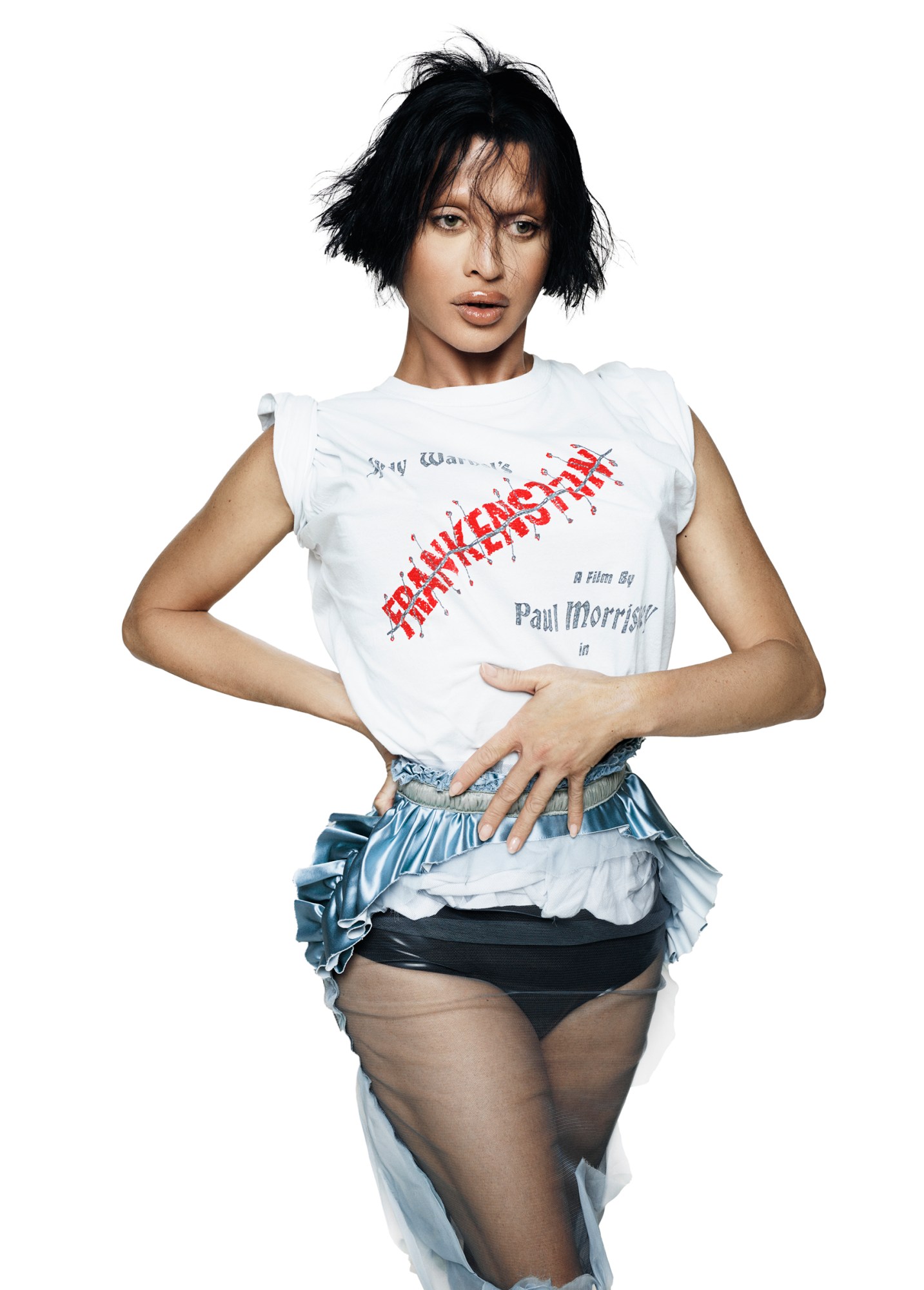
Raul: Same in New York!
Sasha: It was one of the legends’ 40th birthday — her name was Aiko Kenny — and everybody who was anybody was doing a number. That was my introduction to everything about drag — and everything about trans drag. And these were girls in society who were really out living their lives. I didn’t know nothing about hormones or nothing like that until I saw that show at Venus, where I saw some of the most beautiful women I’ve ever seen to this day. This was before you could just go in and get FFS [facial feminisation surgery] — you just had it.
Raul: You needed to know the right girls!
Sasha: Ba-by! It was just a little hormone, a little ‘toot toot’ [primps face].
Raul: Black market, period!
Sasha: I was straight on that table. But I did my first drag show at seventeen, and at eighteen, I started transitioning. I was just like, let’s go.
Raul: It’s crazy, because when I was growing up in the same era. It was all about trans drag — though maybe that was more of a POC thing.
Sasha: It’s a very New York thing. You know, Angela Carrera, all the girls at La Escuelita…
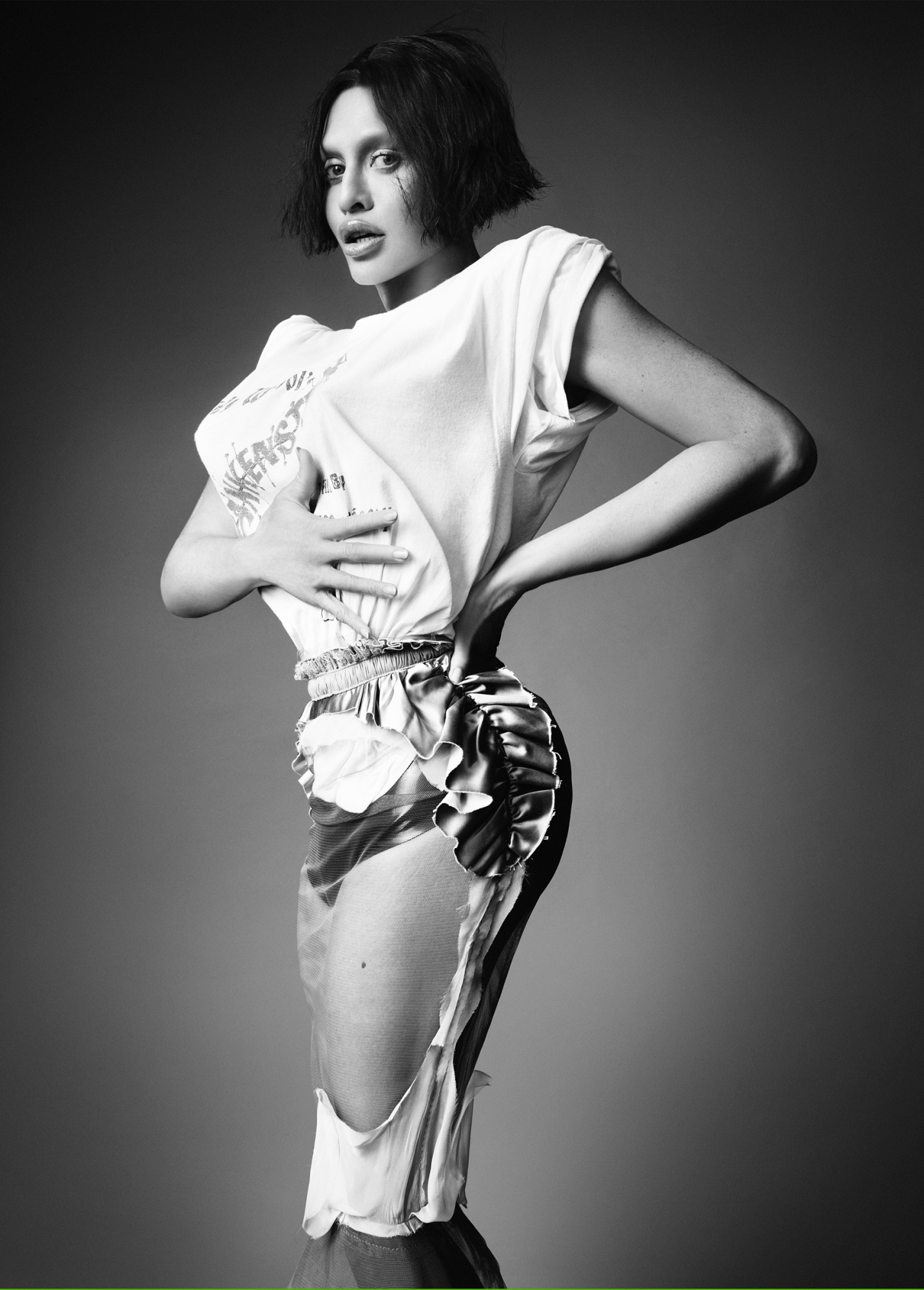
Raul: Girl… those women… Carmen Xtravaganza, Jasmine International… I could keep pulling names out, there were just so many.
Sasha: And they were the legends — like Tenay. Oh bitch, that’s how I started putting my hair up, after seeing her do it at the ball one time.
Raul: Girl, you’re taking me back!
Sasha: Well, you gotta know your history, baby!
Raul: A lot of kids don’t know that these days. Also, you come from the pageant world, which ballroom comes into as well.
Sasha: There were a lot of intersections, especially in the 80s. I mean, Carmen was doing the balls, walking Miss Continental, doing the pageants. It was everything. If they had social media, these women would be blowing us all away.
Raul: I mean, I grew up watching Miss Continental. It was like Miss Universe for all of us. I remember helping with the looks of so many of these older women that I grew up with. It was like, “We need to go to Miss so-and-so’s house and help her finish a look up.” And everybody was all hands on deck, sewing on the beads.
Sasha: Ain’t no glue up in here!
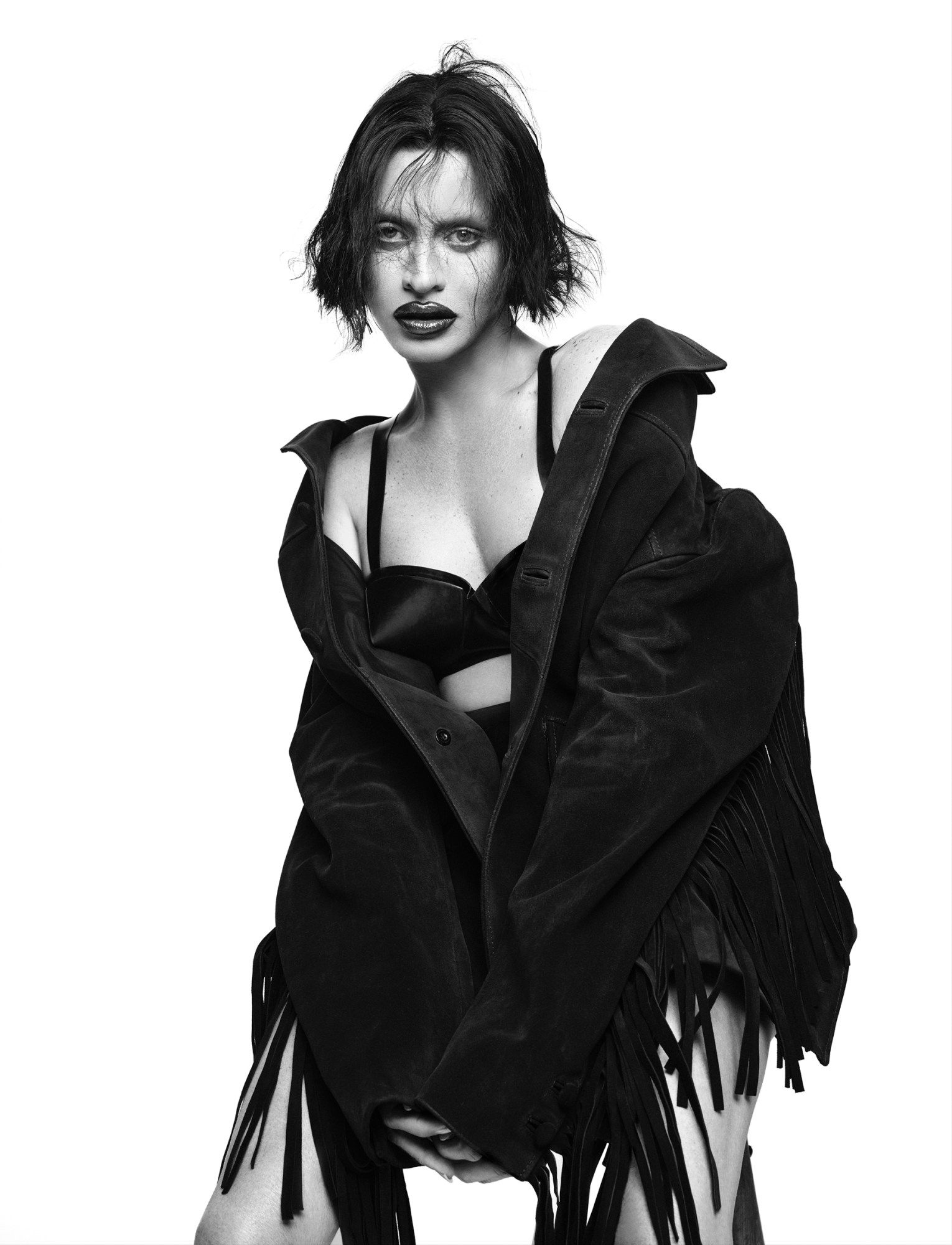
Raul: I mean, those dresses were so heavy, so beautiful. A lot of people don’t understand why my shows are the way they are, but I grew up in an era where everything was about the theatrics — the show, the head-to-toe look, the hair, the make-up, the feeling. Whether it was in the ballroom or the hood, it was always pageantry.
Sasha: And that’s such a New York woman, too. You put on your armour, and you’re not afraid.
Raul: I mean, I remember a lot of my girlfriends would carry a little hammer in their Fendi baguettes, honey! They’d put pearls on it to make it look cute. I was obsessed, because it’s like, “Oh, I’m gonna hit you if you try me, girl, but it’s going to look cute!”
Sasha: [Laughs] Always the little hammer. With the pink handle!
Raul: Peeeeriod. But let’s talk Drag Race. What made you want to apply?
Sasha: I mean, if anyone’s doing drag and says they don’t want to be on Drag Race, that’s crazy. That’s a you thing. But I always loved watching it. My career has been going on for twenty years, so seeing my friends get on it and find their success has been amazing. I really wanted to do it, too, but it wasn’t until I saw my daughter, Kerri Colby, as the first outwardly trans-presenting person on the show that I could see myself on it. I was actually roommates with Kylie Sonique Love when she won — we were locked down in Covid, and I was helping her get her package together. Watching her prepare, go through it, and then win, I took a lot of notes that I didn’t realise I was going to need so soon after. She definitely made me see how much hard work it takes, but, from the start, she really understood what she could contribute to the franchise. That taught me a lot.
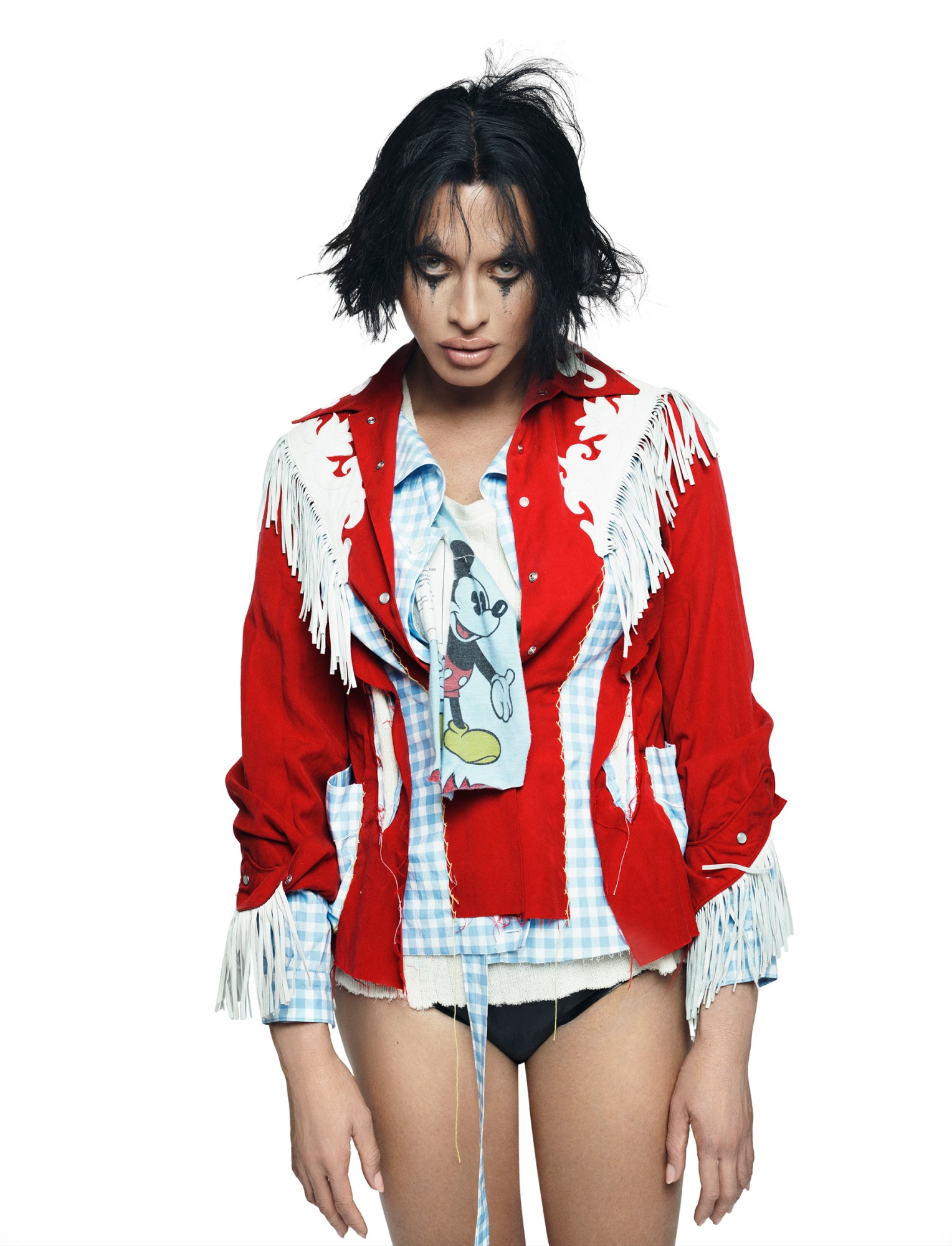
Raul: It’s exactly that. You’re a reflection of everyone you live for. It just makes me wish that the kids today would connect more with the older girls — it actually gives you an advantage, you get the good tips. Girl, I still spray my face when I go out. Hairspray. She sets the beat down!
Sasha: Especially in that New York humidity, honey! But I feel like, after that era of legends, trans girls just didn’t wanna do drag. They’d be like, “Oh, why are you clocking yourself?” And I got that for years — from the dolls. “You want to be a clown? You want to clock yourself for a living?” I’ve heard the worst from my own people, so for me to unapologetically be a drag queen is liberating. And that was the nice thing on Drag Race — I made sure that I wasn’t seen as a trans girl that did drag. I was a drag queen that happened to be trans. I want to make other girls excited to perform and get their queerness on, and not be ashamed and think they have to be in the binary. The power of your transness is your transness! [Laughs]
Raul: And there’s nothing higher than the femme queens — it’s, like, the pinnacle of femininity.
Sasha: You know what I love? A femme queen can be a little hard, a little rough. That’s very Hawaii girl, too. The prettiest girl will whoop your ass.
Raul: It’s very rhinestone hammer.
Sasha: Be the rhinestone hammer, honey!
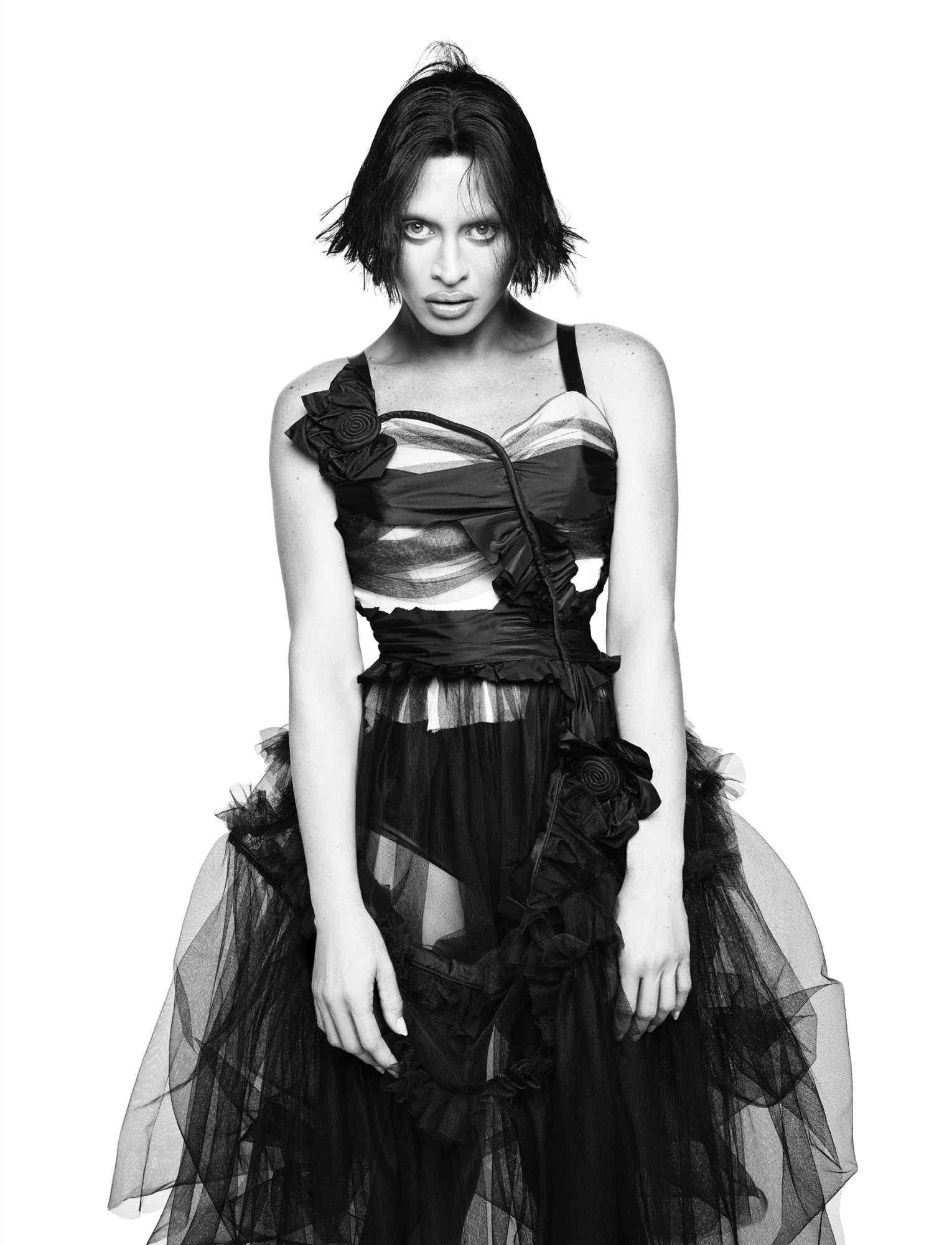
Raul: But how do you navigate your approach to femininity through your art and your approach to femininity as just you?
Sasha: It’s so compartmentalised. My transness, my womanness, is particular to me, but my drag is about the art. Drag is the reason I get up. Drag is my therapist. It’s the longest relationship I’ve ever had. It’s saved my life, put food on my table, cried me to sleep, got me through relationships, got me through a drug addiction. It just so happens that drag connects with so many people, because it’s a space where you can unapologetically be yourself. And, frankly, that’s all that it is. If you’re vibing with me and finding a connection, then you’re doing drag, too. We all are, somehow.
Raul: Period. But it really strikes a nerve with some people, which you can tell when you look at the current state of queer and trans rights here in the US.
Sasha: I mean, it’s a shit show. It’s very, very scary. It feels like when you get teased for being queer when you’re a kid and the teacher doesn’t even defend you, or makes you feel bad for it, too. Except the teacher is the government. But the only thing I know to do when I’m backed into a corner is to stand up for myself and fight back. Because I’m not going nowhere. And that’s what I said in the finale. As much as you want to spew all this misinformation, I’m standing here, completely discrediting everything you say. I’m happy, successful, Brown and kind of well-off in America. In fact, the insanity of what’s been going on has allowed me to have more of a voice, and really speak up for a lot of the people who can’t, who are in homes and towns and religions, living in shame — those girls locking themselves in their bathrooms doing drag till it’s safe to come out again.
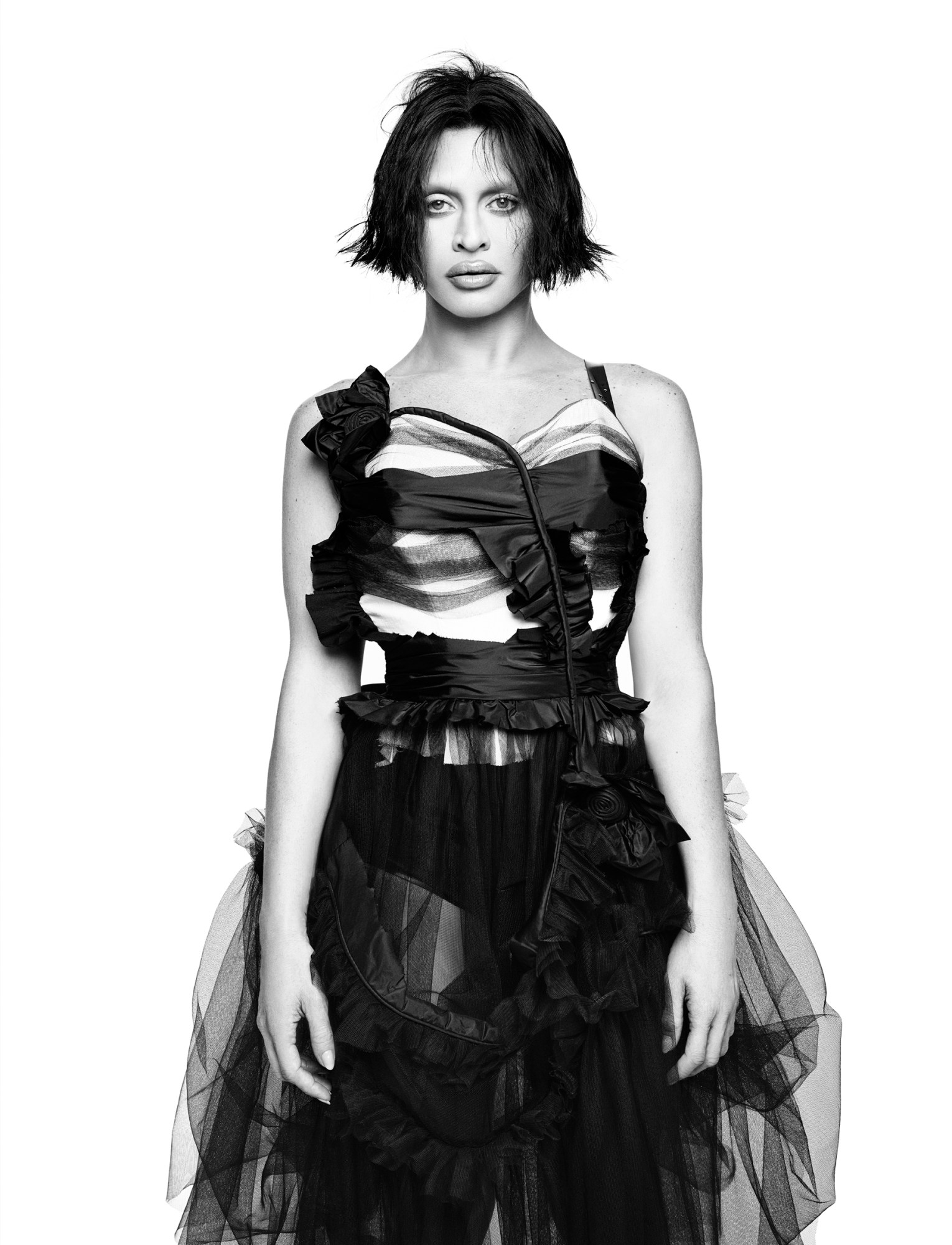
Raul: I feel like, growing up in the places and neighbourhoods we came from, it feels like that again. You have to really stand your ground and be like, “No, I’m here.” And that’s me saying that as a gay man. I can’t even imagine what it’s like to go through as a trans woman.
Sasha: But then you think about it, and it’s just wild — because, like, you picked the wrong group! In order to be trans, you have to have a lot of willpower and some tough fucking skin. Nobody would choose this. I would never wish it upon someone, in the way that they think we’re trying to indoctrinate kids. I wish for them a safe space to figure out what they want and make their own clear choices, but if you’re doing this, you are willing to be ostracised by your family. You are willing to be in poverty. If you are a trans person of colour, you are willing to be killed. And you still want to go through this? That takes so much. It is not for the faint of heart. So they are definitely messing with the wrong people right now. We’re not going anywhere.
Raul: What do you think your win signifies against the backdrop of all this?
Sasha: Well, despite all the crazy sea of misinformation that’s going on, it really hit a nerve with a lot of people. It means something. I’m trying to figure out the disconnect of what’s happening politically, and then what I see when I go out of town to these meet and greets, or I see people at the airports — parents, families, grandparents — telling me, “Oh my gosh, me and my kid watch you! Can we take a picture?” Or a kid telling me, “I was able to show my grandparents this season and explain exactly how I feel about myself.” How do I make that make sense with what is going on politically? I can’t, because I see the truth of what’s going on in America. For the most part, even in those cities that I’m not supposed to be in, I’m still doing drag there, and selling out shows. I’m having these meet and greets with people who are human. I think the people that are making the decisions have lost their humanity, but there’s still so much beyond them, and that still gives me so much faith.

Credits
Photography Willy Vanderperre
Fashion Olivier Rizzo
Hair Louis Ghewy at MA+ Talent using Oribe
Make-up Preston Meneses
Nail Technician Chloé Nguyên
Lighting Director Romain Dubus
Digital Technician Henri Coutant
Photography Assistance Yves Mourtada and Pierre Senechal
Fashion Assistance Niccolo Torelli, Kevin Grosjean and Jeremie Chegrain
Tailor Simone Torpenn
Hair Assistance Sofien Semmache and Esther Fec
Producer to Willy Vanderperre Lotte Mostert
Production 138 Productions
Executive Producer Simon Malivindi
Producer Ashleigh Hayward
Production Coordinator Davia Cardi
Production Assistance Benjamin Vasseur and Sarah Bailly
Casting Director Samuel Ellis Scheinman for DMCASTING
Special thanks to Stéphane Virlogeux
